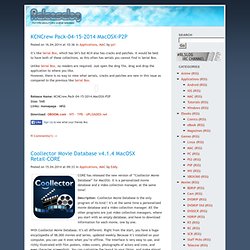Although ExpressVPN is a Hotspot Shield Mac Os Ddl premium VPN, you can use it 1 last update 2020/09/05 for 1 last update 2020/09/05 free for 1 last update 2020/09/05 30 days using its money-back guarantee — perfect for 1 last update 2020/09/05 short-term travel. During my 2-week trip to China, I felt assured knowing I had ExpressVPN's military-grade security to protect me and geo. Download Slack for free for mobile devices and desktop. Keep up with the conversation with our apps for iOS, Android, Mac, Windows and Linux. Aug 31, 2020 Folx is at the top of our list for best download managers for Mac because we believe it is the easiest to use application, with the most features. It's extremely user friendly and is fully compatible with Apple's latest operating system — Catalina.
File TypeData Definition Language File
| Developer | N/A |
| Popularity | |
| Category | Database Files |
| Format | Text |
What is a DDL file?
Database file created in the Data Definition Language (DDL), a language used for describing database schemas; saved in a plain text format and contains commands such as CREATE, USE, ALTER, and DROP; often used for configuring data sources used by data-driven applications.
NOTE: DDL is considered a subset of the Structured Query Language (SQL).
Open over 300 file formats with File Viewer Plus.Programs that open DDL files

Ddl Mac
Utility & Hash Functions (Utility)
Returns a DDL statement that can be used to recreate the specified object. For databases and schemas, GET_DDL is recursive, i.e. it returns the DDL statements for recreating all supported objects within thespecified database/schema.
GET_DDL currently supports the following object types:
Databases (see CREATE DATABASE)
Schemas (see CREATE SCHEMA)
Tables (see CREATE TABLE) (not external tables)
Views (see CREATE VIEW)
Streams (see CREATE STREAM)
Tasks (see CREATE TASK)
Sequences (see CREATE SEQUENCE)
File formats (see CREATE FILE FORMAT)
Pipes (see CREATE PIPE)
UDFs (see CREATE FUNCTION)
Stored Procedures (see CREATE PROCEDURE)

Syntax¶

Ddl Mac
Utility & Hash Functions (Utility)
Returns a DDL statement that can be used to recreate the specified object. For databases and schemas, GET_DDL is recursive, i.e. it returns the DDL statements for recreating all supported objects within thespecified database/schema.
GET_DDL currently supports the following object types:
Databases (see CREATE DATABASE)
Schemas (see CREATE SCHEMA)
Tables (see CREATE TABLE) (not external tables)
Views (see CREATE VIEW)
Streams (see CREATE STREAM)
Tasks (see CREATE TASK)
Sequences (see CREATE SEQUENCE)
File formats (see CREATE FILE FORMAT)
Pipes (see CREATE PIPE)
UDFs (see CREATE FUNCTION)
Stored Procedures (see CREATE PROCEDURE)
Syntax¶
Arguments¶
Required:
object_typeSpecifies the type of object for which the DDL is returned. Valid values (corresponding to the supported object types) are:
DATABASE
SCHEMA
TABLE
VIEW (including for materialized views)
STREAM
TASK
SEQUENCE
FILE_FORMAT
PIPE
Usb wireless network card for mac. FUNCTION (for UDFs)
PROCEDURE (for stored procedures)
namespace.object_nameSpecifies the fully-qualified name of the object for which the DDL is returned.
Namespace is the database and/or schema in which the object resides:
Not used for databases.
For schemas, takes the form of
database.For schema objects (tables, views, streams, tasks, sequences, file formats, pipes, and UDFs), takes the form of
database.schemaorschema.
Namespace is optional if a database and schema are currently in use within the user session; otherwise, it is required.
Optional:
use_fully_qualified_names_for_recreated_objectsIf TRUE, the generated DDL statements use fully-qualified names for the objects to be recreated.
Default: FALSE.
Note
This does not affect the names of other objects referenced in the DDL statement (e.g. the name of a table referenced ina view definition).
Returns¶
Returns a string (VARCHAR) containing the text of the DDL statement that created the object.
For UDFs and stored procedures, the output might be slightly different from the original DDL. For example, if the UDFor stored procedure contains JavaScript code, the delimiter characters around the JavaScript code might be different.Also, if the original CREATEPROCEDURE statement did not specify EXECUTEASOWNER orEXECUTEASCALLER, the output from GET_DDL include EXECUTEASOWNER because that is the default.
Usage Notes¶
Currently, GET_DDL does not support external tables.
object_typeandobject_name(includingnamespaceif specified) must be enclosed in single quotes.For
object_type,TABLEandVIEWare interchangeable. If aTABLEobject type is specified, and the object specified by name is a view, the function returns the DDL forthe view and vice-versa.If
object_typeisFUNCTION(i.e. UDF) and the UDF has arguments, you must include the argument data types as part of the function name, in the form of'function_name([arg_data_type[,..]])'.If
object_typeisPROCEDUREand the stored procedure has arguments, then you must include theargument data types as part of the function name, in the form of'procedure_name([arg_data_type[,..]])'.
Collation Details¶
Ddl For Mac Catalina
Collation information is included in the input.
Ddl For Mac Os
Examples¶
Return the DDL used to create a view named books_view:
Return the DDL used to create a schema named books_schema and the objects in the schema (the table books_tableand the view books_view):
Return the DDL that uses fully-qualified names for the objects to be recreated:
Note
As demonstrated in the example above, the DDL statement doesn't use a fully-qualified name for the table used to create theview. To resolve the name of this table, Snowflake uses the name of the database and the name of the schema for the view.
Return the DDL used to create a UDF named multiply that has twoparameters of type NUMBER:
Return the DDL to create a stored procedure named stproc_1 that has one parameter of type FLOAT:
